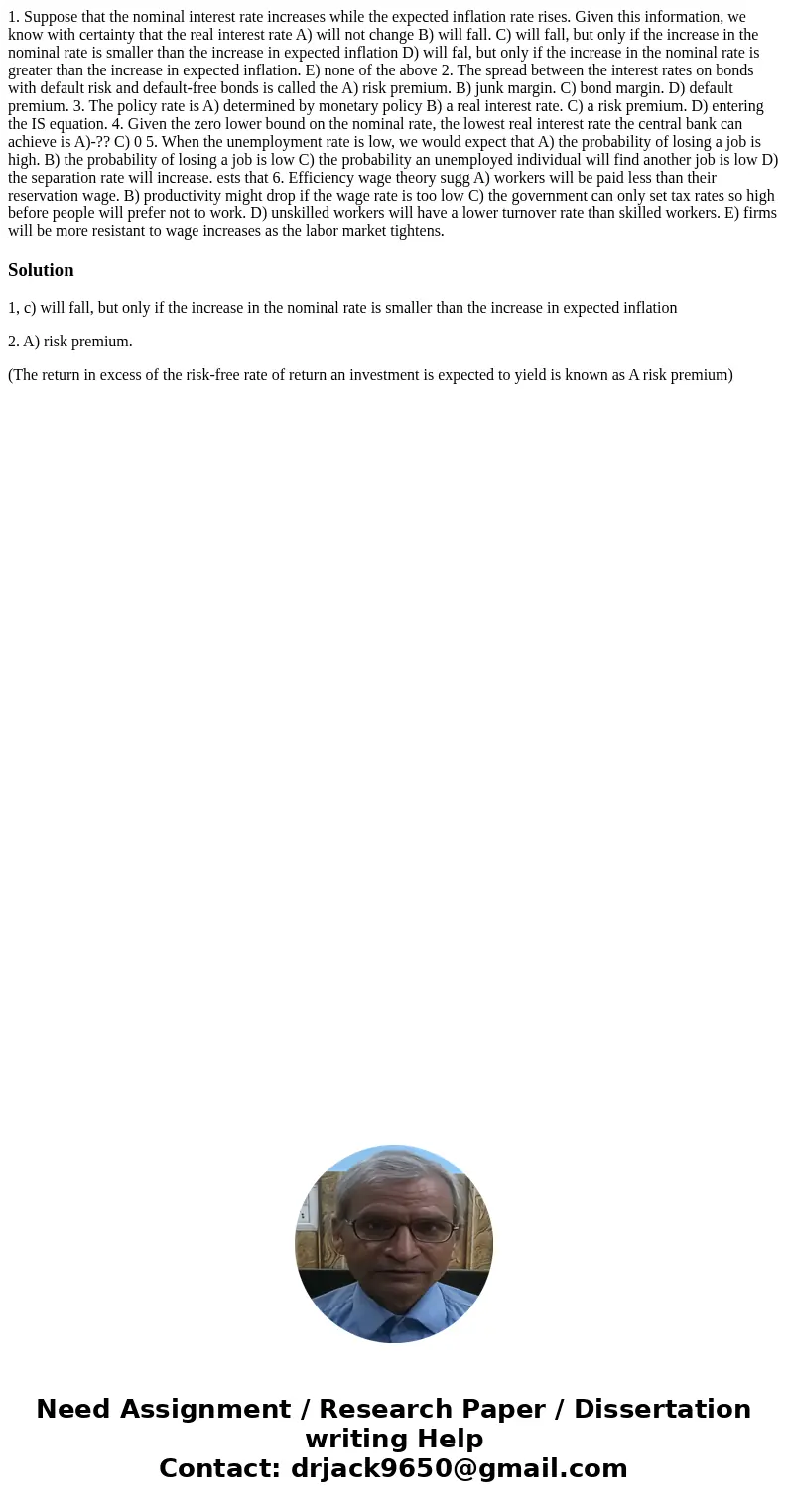1 Suppose that the nominal interest rate increases while the
1. Suppose that the nominal interest rate increases while the expected inflation rate rises. Given this information, we know with certainty that the real interest rate A) will not change B) will fall. C) will fall, but only if the increase in the nominal rate is smaller than the increase in expected inflation D) will fal, but only if the increase in the nominal rate is greater than the increase in expected inflation. E) none of the above 2. The spread between the interest rates on bonds with default risk and default-free bonds is called the A) risk premium. B) junk margin. C) bond margin. D) default premium. 3. The policy rate is A) determined by monetary policy B) a real interest rate. C) a risk premium. D) entering the IS equation. 4. Given the zero lower bound on the nominal rate, the lowest real interest rate the central bank can achieve is A)-?? C) 0 5. When the unemployment rate is low, we would expect that A) the probability of losing a job is high. B) the probability of losing a job is low C) the probability an unemployed individual will find another job is low D) the separation rate will increase. ests that 6. Efficiency wage theory sugg A) workers will be paid less than their reservation wage. B) productivity might drop if the wage rate is too low C) the government can only set tax rates so high before people will prefer not to work. D) unskilled workers will have a lower turnover rate than skilled workers. E) firms will be more resistant to wage increases as the labor market tightens. 
Solution
1, c) will fall, but only if the increase in the nominal rate is smaller than the increase in expected inflation
2. A) risk premium.
(The return in excess of the risk-free rate of return an investment is expected to yield is known as A risk premium)

 Homework Sourse
Homework Sourse